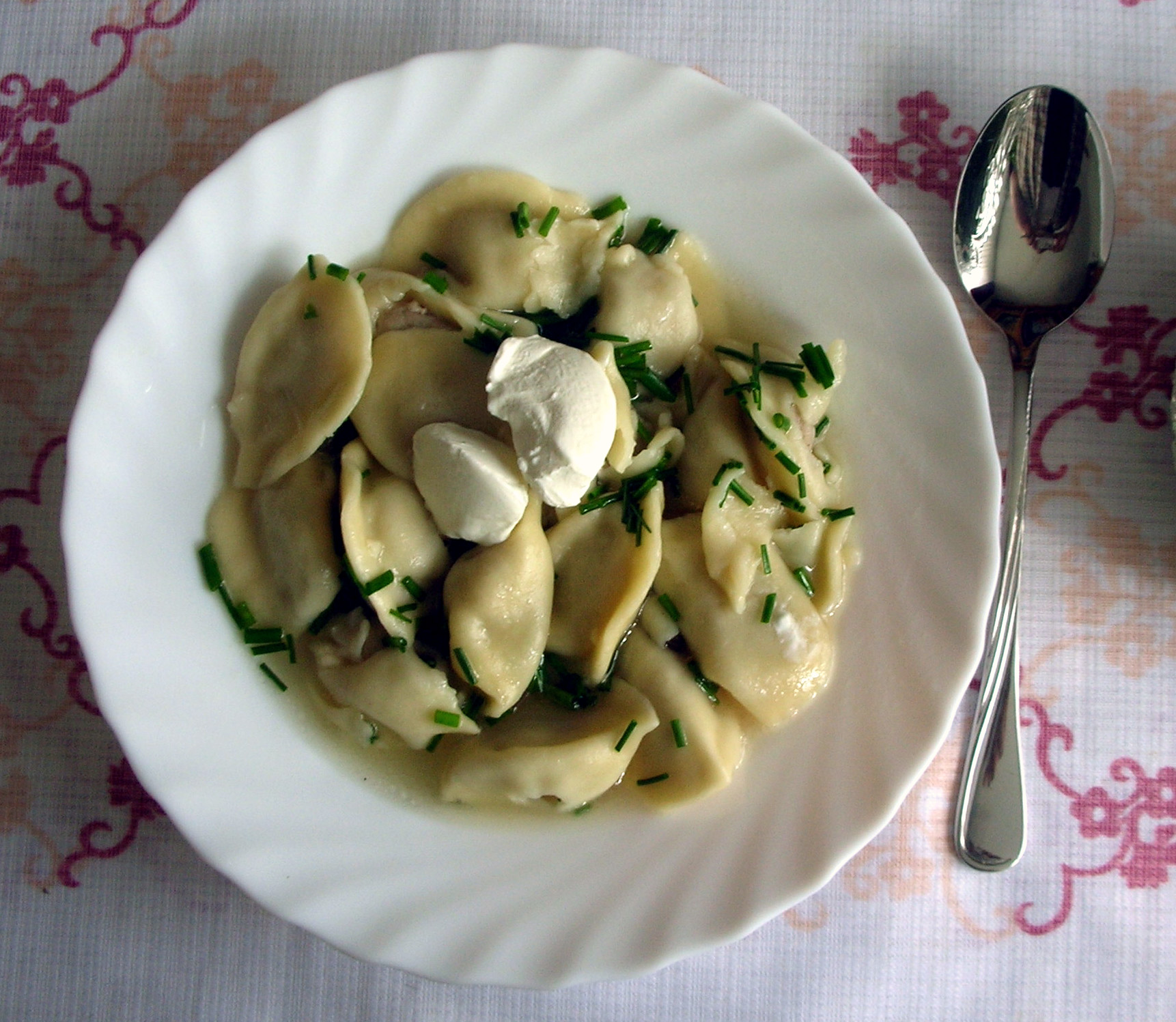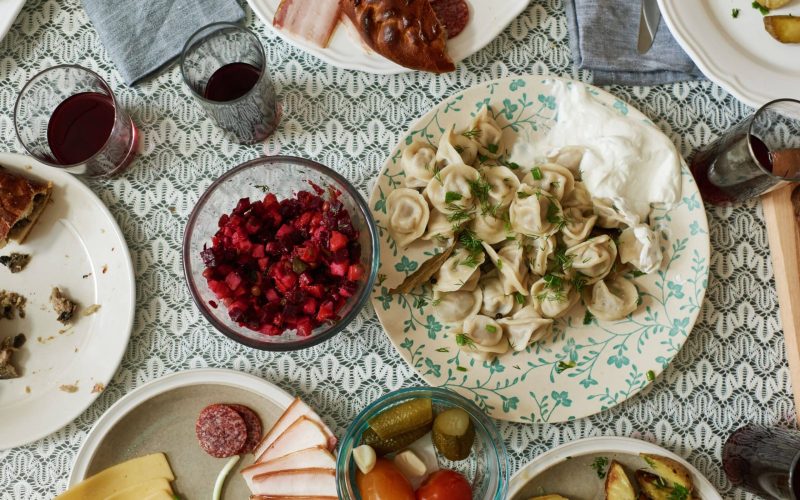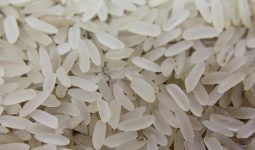Although Russia may not be the first country that comes to mind when thinking of a culinary destination, the country has a wide variety of tasty traditional meals collectively called traditional Russian Food.
The type and flavors of Russian Food, influenced by Russia’s connections to Europe, Asia, and the Middle East, often astound visitors to Russia.
Soups, porridge, and stuffed dough are some of the most traditional Russian dishes created using vegetables and wheat.
The vastness of the country and the abundance of its forests, valleys, and rivers shaped the Russian people’s traditions and food.
Slavs fished, hunted, and raised animals. They grew cereals and vegetables, prepared porridge and stew, pickled and dried mushrooms, and felt, tracked, and raised animals.
Cereals, fruit, vegetables, wheat, and fish are all used in traditional Russian dishes. Products that were readily available in everyday people’s lives.
In the halls of kings, meat meals were frequently made for the holidays, and these were culinary masterpieces: a duck with apples, a baked pig, or even a roasted swan.
So, here are some traditional Russian Foods you can try anytime you visit the country.
1. Pelmeni

Nobody knows when Russians started making pelmeni, but the dish has since become a staple of the country’s cuisine.
The time-consuming delicacy is generally prepared for special occasions. Still, if you don’t want to spend several hours creating small dumplings, you can purchase a pack of frozen pelmeni at any grocery shop (of course, they are never as good as homemade ones).
Pelmeni is typically packed with lamb, pork, beef, or a combination of the three, and the thinness of the dough is what distinguishes them. Pelmeni can be eaten with or without broth, but sour cream is always included.
2. Borscht
Borscht is a beet soup that originated in Ukraine and has become a popular Traditional Russian food. To many Westerners, beets may appear to be an unusual soup foundation, but there are numerous reasons why this hearty soup is one of Russia’s most famous recipes.
It’s packed with beef and sautéed veggies like cabbage, carrots, onions, and potatoes. It’s finest served with a dollop of fresh sour cream on top, whether hot or cold.
3. Blini
Religious traditions significantly influence Traditional Russian Food. The preparation of pancakes, for example, dates back to paganism: people used to prepare pancakes in the shape of the sun.
Russian pancakes are thin and not as sweet as French crêpes, but you can fill them with whatever you choose.
For those with a sweet tooth, pancakes with sour cream and salmon, caviar or mushrooms, and condensed milk or berries are traditional.
Furthermore, a particular holiday, Maslenitsa, occurs every year one week before the beginning of spring, during which we Russians consume pancakes for the entire week.
4. Beef Stroganoff
This well-known Russian delicacy has an intriguing backstory. The Russian upper class was extremely affluent during the Tsars. They had a solid attachment to Paris and frequently lived there, communicating in French at home and in social functions.
The meal was devised for a cooking competition in 1891 by a French chef who worked for a wealthy St. Petersburg family. He made sautéed beef pieces with smetana and served them in a lovely sauce (sour cream).
Beef Stroganoff became a signature dish for countless hosts and a headline entrée at expensive restaurants because it was exquisite yet straightforward to prepare.
5. Shchi
Shchi is a traditional cabbage soup made from fermented or fresh cabbage. While different recipes call for other ingredients, shchi frequently includes potatoes, carrots, onions, and perhaps chicken.
In addition, Sauerkraut can also be used in place of the cabbage, resulting in sour shchi.
6. Solyanka
Solyanka is a thick soup filling enough to serve as a meal. It is a traditional Russian soup containing a variety of meats, such as sausage, bacon, ham, and beef, and vegetables, including cabbage, carrots, onions, and potatoes.
The sour flavor of this recipe is enhanced by chopped pickles and the typical lemon slice garnish, and it’s frequently served with pickled cucumbers and fish.
7. Shashlik
Shashlik is typically made with vast cuts of lamb, hog, or chicken marinated for a few hours. Kefir, soy sauce, or lemon juice are typical marinades combined with herbs, spices, and occasionally vegetables like onions, garlic, or tomatoes.
Russians like to eat it with grilled vegetables or potatoes roasted in foil in the coals.
8. Syrniki
In essence, cooking syrniki is the same as cooking bliny: create and fry the batter. To begin, combine quark (tvorog in Russian) with flour, eggs, sugar, and raisins or apricots for added texture and flavor.
Then, in a separate pan, prepare little pancakes, ensuring that the insides are cooked through but still creamy. This provides an exciting contrast to the well-fried sides of syrniki!
In addition, Syrniki is a sweet and savory traditional Russian food commonly served as a breakfast or dessert. Typically, these are filled with sour cream or varenye on the side.
9. Cherbureki
Cherburki is an amazing traditional Russian food that requires few ingredients and is simple to prepare. It’s made with beef or pork, herbs, onions, spice, and parsley, then wrapped in a soft dough, folded, and fried until golden brown.
Cherbureki can be frozen and reheated for future lunches. Turkey and Lithuania, for example, are both big fans of it.
10. Okroshka Soup
Okroshka is a traditional cold soup with kvass, a cool drink from fermented bread. It’s perfect for a hot summer day.
The soup is commonly served with dill and sour cream. It comprises cooked beef or bologna, radishes, cucumbers, scallions, boiled potatoes, and eggs.
However, kvass can sometimes be substituted with kefir or mineral water, and vegetarian okroshka is also popular.
11. Kotleti
Russian kotleti are fried meat patties made even juicier by adding minced onion and bread crumbs to the meat.
Kotleti is often composed of beef or chicken, but pike patties are also available at most Russian-style restaurants (and those are usually fantastic).
Kotleti is eaten with mashed potatoes, spaghetti, or buckwheat kasha and is fried and crunchy.
12. Kholodets
Kholodets, also known as studen, may not appear appetizing. Still, it’s a delectable traditional Russian meal that dates back when people had to get inventive to preserve meat.
Kholodets is one of the most time-consuming meals in Russian cuisine. It takes more than seven hours to prepare and another seven hours to chill.
For jellied texture, fresh meat (pork or cow’s feet) is required. It is cooked for seven hours, then sliced into pieces and poured over the broth it simmered in.
13. Kasha (Porridge)
There are many various types of porridge in Russia, but this is arguably the most common dish for breakfast in a Russian home.
However, you’ve probably already tried those at home. Buckwheat porridge is the most interesting, and I recommend trying the Russian one.
Buckwheat porridge is a nutritious dish typically boiled in water or milk and eaten as a stand-alone meal (sometimes with butter, sugar, or condensed milk) or as a side dish in the afternoon. It is one of the major courses during the Orthodox fast.
14. Ukha
If you prefer seafood, try ukha, a clear-broth fish soup. This soup can be made with fish, including bream, wels catfish, northern pike, and ruffe.
15. Ikra
In Russia, caviar, or ikra, is a primary source of excitement. It’s briny and tangy, typically eaten with dark, crusty bread or blini, similar to pancakes or crepes. A popular zakuska is caviar on buttered toast.
16. Russian Honey Cake

This is a delicious Russian sponge cake dish with multiple layers of biscuits, honey, milk, cinnamon, butter, and sour or whipped cream.
Furthermore, the cake can be frozen for an excellent, refreshing taste once made. It was devised in the 19th century by a chef who sought to please Empress Elizabeth of Russia, Alexander the First’s wife. It is also known as Medovik.
In addition, She despised honey but was smitten by the cake that had been cooked for her. The cake gained popularity during the Soviet era and is a delicious delicacy.
If this cake dazzles royalty, it’s likely to dazzle you with its distinct honey flavor.








